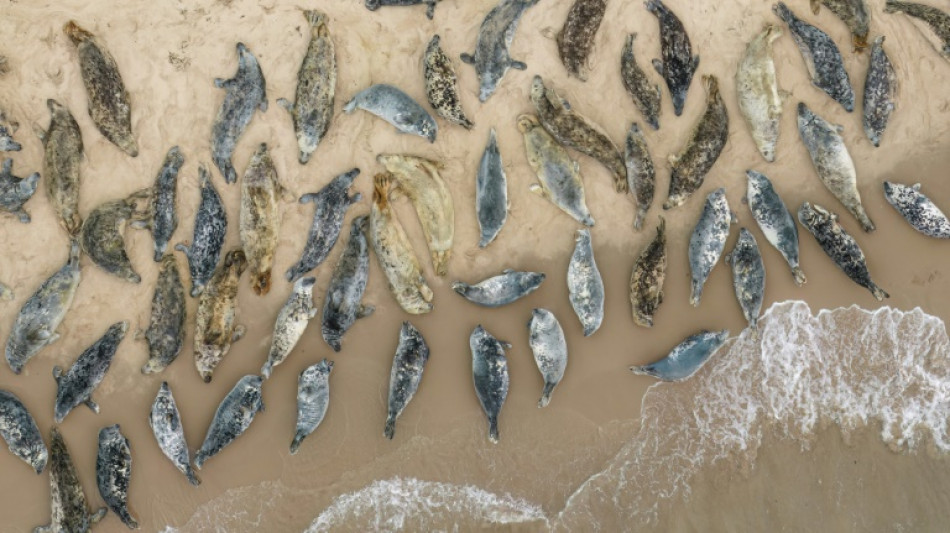
-
 Record-breaking US shutdown to end as political fallout begins
Record-breaking US shutdown to end as political fallout begins
-
Wallets, not warming, make voters care about climate: California governor

-
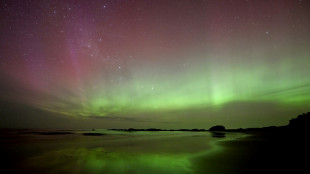 Astronomers spot storm on another star for first time
Astronomers spot storm on another star for first time
-
G7 foreign ministers seek to boost Ukraine war effort

-
 Released Epstein emails allege Trump 'knew about the girls'
Released Epstein emails allege Trump 'knew about the girls'
-
Rees-Zammit back in Wales 'happy place' after Test return

-
 Chelsea winger Sterling's house burgled
Chelsea winger Sterling's house burgled
-
Auger-Aliassime beats Shelton to get off mark at ATP Finals

-
 Argentina's Milei to follow Trump in skipping S.Africa G20: spokesperson
Argentina's Milei to follow Trump in skipping S.Africa G20: spokesperson
-
Back on track: Belgian-Dutch firm rescues Berlin to Paris sleeper train

-
 Los Angeles 2028 Olympic Games schedule revealed
Los Angeles 2028 Olympic Games schedule revealed
-
Wolves appoint Edwards as manager in bid to avoid relegation

-
 UK music industry warns growth threatened by AI, Brexit
UK music industry warns growth threatened by AI, Brexit
-
Epstein alleged Trump 'knew about the girls': Democrats

-
 German experts slam spending plans, cut GDP forecast
German experts slam spending plans, cut GDP forecast
-
S.Africa's Ramaphosa says US skipping G20 'their loss'

-
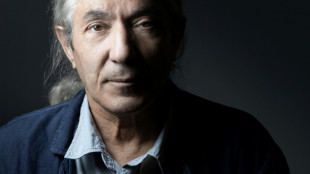 Algeria pardons writer Boualem Sansal
Algeria pardons writer Boualem Sansal
-
Tuchel warns Bellingham must fight for England berth at World Cup

-
 Mbappe says France football team 'to remember' Paris terror victims
Mbappe says France football team 'to remember' Paris terror victims
-
Joshua decision on 2025 bout imminent - promoter

-
 Cambodia says Thai troops kill one in fresh border clashes
Cambodia says Thai troops kill one in fresh border clashes
-
UK holidaymakers told to shout, not get in a flap over seagulls
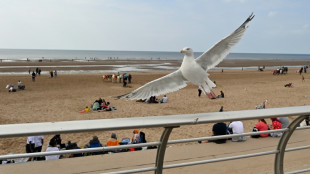
-
 Pope Leo reels off four favourite films
Pope Leo reels off four favourite films
-
Lebanese say Israel preventing post-war reconstruction

-
 Stocks mostly rise on hopes of US shutdown deal, rate cut
Stocks mostly rise on hopes of US shutdown deal, rate cut
-
Bayer beats forecasts but weedkiller woes still weigh

-
 42 feared dead in migrant shipwreck off Libya: UN
42 feared dead in migrant shipwreck off Libya: UN
-
Cambodia, Thailand trade accusations of fresh border clashes

-
 Pakistan tightens Islamabad security after suicide blast
Pakistan tightens Islamabad security after suicide blast
-
Messi return 'unrealistic', says Barca president Laporta

-
 Bayer narrows loss, upbeat on weedkiller legal woes
Bayer narrows loss, upbeat on weedkiller legal woes
-
Corruption scandal, court battles pose test for Zelensky

-
 DR Congo ex-rebel leader Lumbala's war crimes trial opens in France
DR Congo ex-rebel leader Lumbala's war crimes trial opens in France
-
Five things to know about the first G20 held in Africa
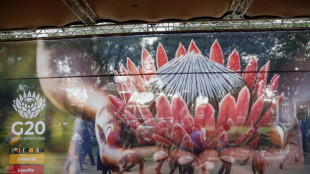
-
 Asian markets rise on hopes over shutdown deal, rate cut
Asian markets rise on hopes over shutdown deal, rate cut
-
Johannesburg gets rushed makeover for G20 chiefs

-
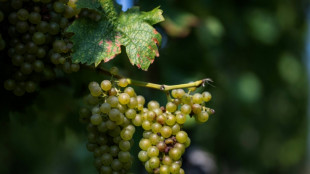 World wine output set for modest 2025 recovery: industry body
World wine output set for modest 2025 recovery: industry body
-
Ukraine justice minister suspended over corruption case: PM

-
 Osimhen, Mbeumo potential key figures in African World Cup play-offs
Osimhen, Mbeumo potential key figures in African World Cup play-offs
-
Tanzania politicians in shock as cabal takes over after massacre

-
 Prague cathedral's long-awaited organ to pipe up in 2026
Prague cathedral's long-awaited organ to pipe up in 2026
-
Australia's Hazlewood gets all-clear after Ashes scare but Abbott ruled out

-
 Migrant workers in Romania fear wave of hate fuelled by far right
Migrant workers in Romania fear wave of hate fuelled by far right
-
DR Congo ex-rebel leader Lumbala's war crimes trial opens in Paris

-
 Turkey says military plane crash in Georgia killed all 20 onboard
Turkey says military plane crash in Georgia killed all 20 onboard
-
Renewables outpace fossil fuels despite US policy shift: IEA
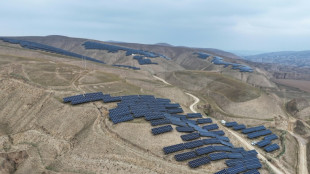
-
 India bank on formidable home Test record in South Africa series
India bank on formidable home Test record in South Africa series
-
Australia's Hazlewood in injury scare ahead of first Ashes Test

-
 No ordinary Joe: Stokes backs Root to fire in Australia
No ordinary Joe: Stokes backs Root to fire in Australia
-
Humans can no longer tell AI music from the real thing: survey

| CMSC | 0.33% | 24.05 | $ | |
| CMSD | 0.12% | 24.35 | $ | |
| SCS | 0.28% | 15.795 | $ | |
| BCC | 0.74% | 70.15 | $ | |
| NGG | 0.83% | 77.959 | $ | |
| BCE | -1.85% | 22.985 | $ | |
| GSK | -0.48% | 48.18 | $ | |
| JRI | -0.14% | 13.8 | $ | |
| RIO | 1.43% | 71.34 | $ | |
| AZN | -0.96% | 88.24 | $ | |
| RYCEF | -0.47% | 14.88 | $ | |
| BTI | 0.15% | 55.845 | $ | |
| VOD | -2.1% | 12.41 | $ | |
| RELX | -2.68% | 41.37 | $ | |
| RBGPF | 0.73% | 78.52 | $ | |
| BP | -1.37% | 36.845 | $ |

In Quebec, seal hunters want public to see practice in new light
At the helm of his motorboat, with the wind whipping and the waves crashing, Canadian seal hunter and photographer Yoanis Menge scans the horizon.
From the port of Grosse-Ile, the northern tip of the tiny Magdalen islands archipelago in the Gulf of Saint Lawrence, he spots a group of seals sunning themselves on a sandbar.
But at the slightest noise, they move. Once in the water, hunting them is much harder. From the boat, only their little black heads stick out -- quite a narrow target.
This time, Menge and his crew complete the kill from the sandbar, shooting the seals. They skin the animals and cut them apart, saving the parts they want to keep.
Menge knows seal hunting is a controversial practice, but he says it is also an ancestral tradition for the people of the Magdalen islands and several Indigenous groups in Canada, including the Inuit.
In the islands, where seal hunting is possible year-round, on the ice or on the water, Menge and others hope to rehabilitate the image of the hunt, with the support of fishermen who are worried about dwindling fish stocks.
"Here, we live with the seals -- we don't just hunt them," says Menge, who welcomed an AFP team on a hunt in late May.
"What prompted the United States or Europe to ban seal products? These are sentimental reasons. It is the only animal boycotted for sentimental reasons."
- 'Murderers' -
Any discussion of seal hunting in the Magdalen islands inevitably comes back to the image of French movie star and animal rights activist Brigitte Bardot, who in the 1970s posed on the ice floe next to baby harp seals.
Over the years, activists have particularly objected to the clubbing of the animals.
"We were treated as savages, barbarians and murderers," recalls Gil Theriault, director of the Intra-Quebec Sealers Association.
"These insults have done us a lot of harm in the public sphere. It was an attack on our way of life," he said.
Since the 1970s, the hunt has been on the wane.
On Canada's Atlantic coast, there are gray, harp, harbor, bearded, hooded and ringed seals. Commercial hunting mainly targets the first two species.
During the 1950s and 1960s, hunters could make money from the pups' white coats, highly sought after by the fashion industry. That practice was banned in 1987.
And little by little, the doors have been closing.
The United States has banned seal products since 1972. And in 2010, the European Union imposed an embargo because of hunting methods that were deemed too cruel -- a blow for the industry, which lost 30 percent of its customers.
Today, seals are mostly hunted locally for their meat, which is served in some high-end restaurants across Quebec.
But some hope to revive interest in what Magdalen islands butcher Rejean Vigneau calls an "incredible" meat.
Vigneau makes about 15 different products from seal meat, from sausages to terrines.
"It's a local meat, without hormones, very rich in iron, lean, excellent for your health," said Vigneau, who is one of only a few dozen hunters still active in the islands, down from hundreds a few decades ago.
"It's surprising that it's still frowned upon."
- 'We have a problem' -
Some of the remaining hunters now dream of bolstering their ranks, pointing out that the seal has few natural predators, and without humans hunting them, their populations grow rapidly.
They also feed on all kinds of fish -- an adult swallows several kilos a day. That is a drain on the main source of revenue for island dwellers.
"In the Gulf, given the number of gray seals and their consumption of fish... we have a problem. Fish stocks are not going up," said fisherman Ghislain Cyr.
Simon Nadeau, a marine mammals expert with the Canadian Department of Fisheries and Oceans, explains that seal populations have exploded since the 1970s.
"But we're not talking about overpopulation," he insisted.
The number of harp seals nearly quadrupled between 1970 and 2019 to an estimated 7.6 million, according to government data.
In the Gulf of Saint Lawrence, the gray seal population increased from 5,000 in 1960 to 44,000 animals in 2017.
At the same time, fish stocks in the Atlantic Ocean off Canada are at their lowest levels on record.
For Nadeau, the two are not so easily linked, in particular because the entire ecosystem has been altered in recent decades due to global warming and overfishing.
"Seals may have contributed to the decline of fish stocks, but they did not cause it," he said, while acknowledging that they are one of the factors that prevent certain fish populations from bouncing back.
D.Moore--AMWN



